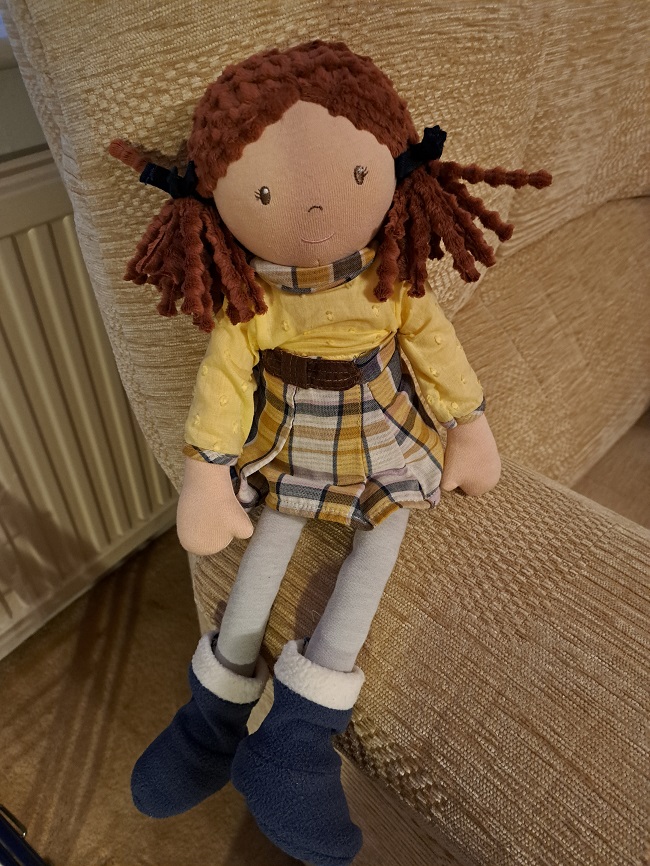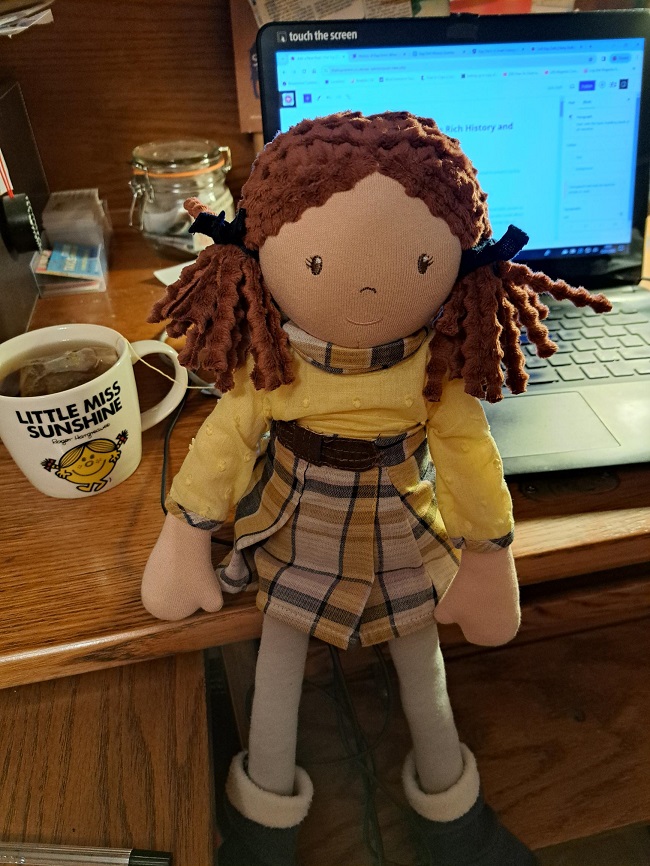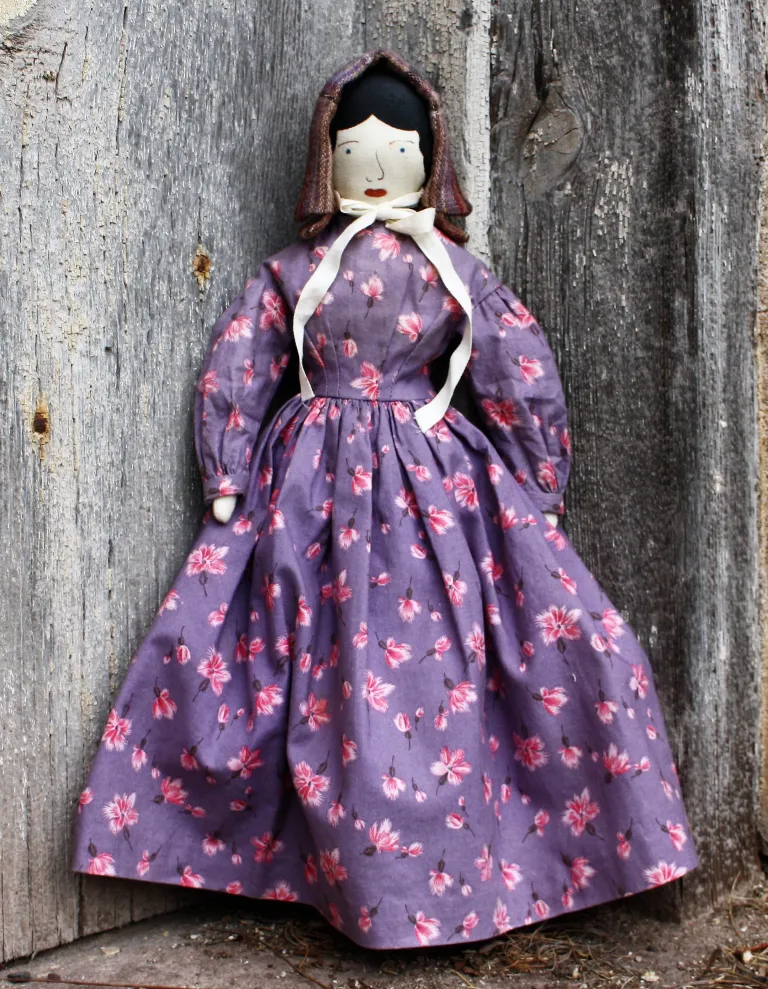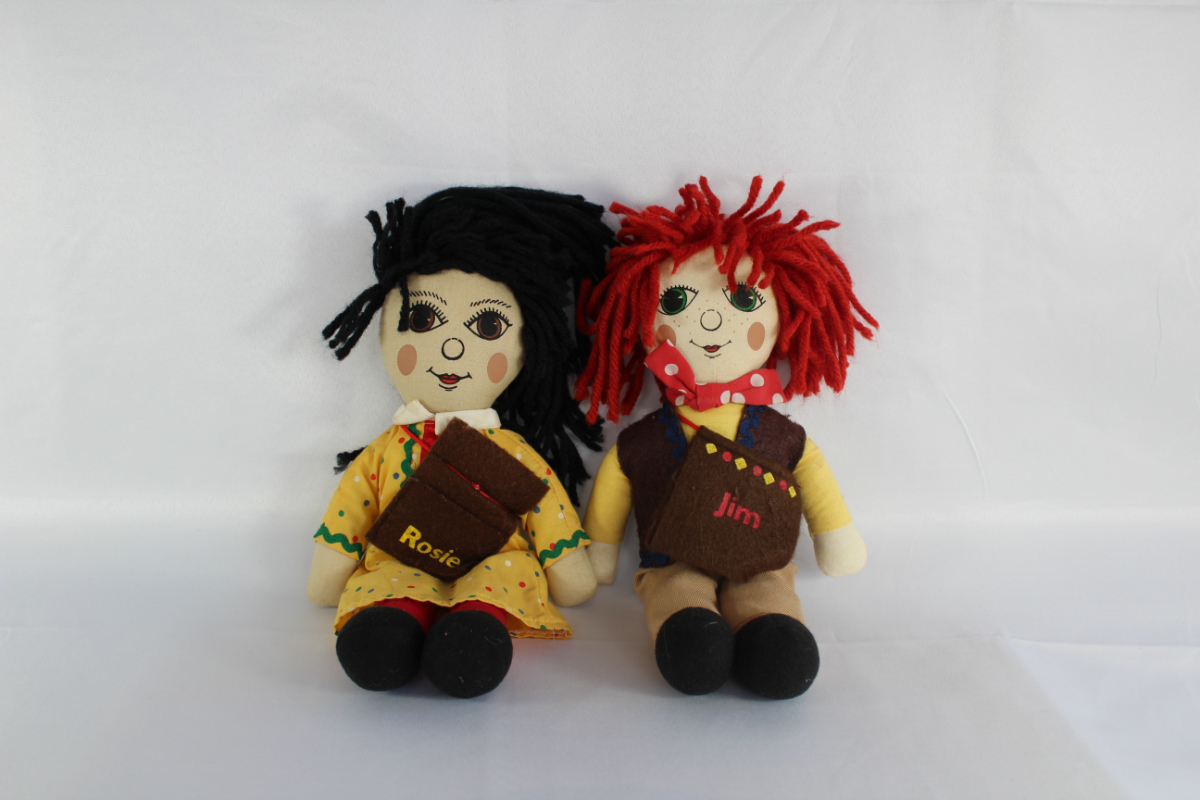Introduction:
Join me, Maddy, in my very exciting blog on the magical history of rag dolls. Just like me! I’m very excited to present my first journey into the The Toy Centre blog world!



Why Are Rag Dolls Universally Loved?
With their cushiony bodies and charming features, rag doll toys are loved the world over. Especially me! Being soft, beautiful companions and suitable from birth. Furthermore, many rag dollies feature an array of adorable clothing. From pretty printed dresses to dungarees. And often quirky hair. Ahem! Moreover, at The Toy Centre we provide a selection of wonderful new clothes specifically for rag dolls. Really great for when you want to switch up the play and swap garments for different play ideas. Pyjamas for bedtime and the like. Plus, nowadays you can find sweet girl and boy dolls available too. For example, check out gorgeous Elsie, Leon and Olivia. Perfect for playtime. Not to mention a great gift at anytime.
With cute, off-the-wall characters and immediate cuddles, soft rag dolls are a fabulous way to inspire creative play sessions.
As a result, best friends for life!



Unravelling the Origins: A Tapestry of Centuries
Venturing back through time, we find the roots of rag dolls deeply intertwined with medieval societies. Period dolls, known as Poppets (don’t you just love that?), made their debut in the fourteenth century, signalling a shift towards manufacturing toys for those who could afford them. Though extant examples are scarce, historical evidence suggests the existence of various miniature human figures, including the Roman rag doll found in Egypt, now a treasured artifact in the British Museum .
In the twelfth century, Great Fairs became hubs of entertainment, featuring puppet shows that undoubtedly fuelled children’s desires for dolls. German writers praised the beauty of medieval dolls, yet surviving examples from the thirteenth century reveal plain clay shapes that once boasted intricate paintwork. By the fifteenth century, doll making flourished in Germany, introducing jointed wooden dolls to the world.
A Renaissance of Dolls in the Sixteenth Century
The sixteenth century witnessed a surge in doll diversity, with paintings depicting these cherished playthings. German craftsmen led the field, producing jointed wooden dolls, while fashion dolls exchanged by queens illuminated the latest trends. A notable example, dated 1590, resides in the Royal Armory Collection in Stockholm, challenging the conventional notion of a rag doll.

Children and Dolls: A Timeless Connection in the History Of Rag Dolls
Children, being creatures of imitation, found solace in dolls, satisfying their instinct to mimic adults. Contrary to the perception of crudeness, rag dolls could be elaborate creations. Families, especially those less privileged, often crafted their own dolls, utilizing various materials such as wood, rags, and even found objects like sticks and roots.
Key Discoveries:
- Roman rag doll found in Egypt, 1st–5th centuries A.D., now at the British Museum.
- Illustration from Kunst und Lehruchlein, 1580, depicting a girl with a non-wooden doll.
- Commercial production of rag dolls commences around 1830, maintaining simplicity and patchwork charm.



The Tapestry Extends: From Ancient Times to Modern Interpretations
Drawing from the vast canvas of cultural history, we find rag dolls not merely as toys but as companions offering comfort to children. They evolved as educational tools, teaching youngsters about nurturing and sewing skills. Mexico embraced the rich history of rag dolls, reviving them in the 1970s to support the local economy.
The Rise of Rag Doll Trends: 20th Century Onward
Like the timeless magic of wooden toys, we find the commercial production of rag dolls gained momentum around 1830, aligning with the onset of fabric colour printing. Yet, despite being mass-produced, these dolls retained their simple features, soft bodies, and often, the charm of patchwork clothing. The 20th century witnessed a resurgence of interest in handmade and vintage items, sparking a nostalgic trend that elevated rag dolls to coveted collectibles.
Named Rag Dolls Through the Ages: Cherished Companions and Cultural Icons
- Bangwell Putt (1770s): An American rag doll thought to date back to the 1770s, offering a glimpse into the craftsmanship of early rag doll makers.
- Charles IX’s Daughter’s Doll (1590): Displayed in the Royal Armory Collection in Stockholm, this silk-threaded creation from the late sixteenth century remains a rare surviving example, challenging traditional notions of rag dolls (fig. 3).
- Golliwog (19th Century): A 19th-century rag doll character that became a cultural icon, appearing in various forms of literature and entertainment.
- Raggedy Anne (20th Century): A rag doll with red yarn hair and a triangle nose, inspiring the popular TV show “Rag Doll Anna” in the 1980s.
- The Raggy Dolls (1980s): A popular TV series celebrating imperfect dolls and promoting the idea that every doll is unique and special.
- Rosie and Jim (1990s): Another child’s TV show featuring rag dolls, continuing the tradition of showcasing these fabric companions in children’s entertainment.
- Sally (The Nightmare Before Christmas): A slightly spooky-looking rag doll character from the iconic film “The Nightmare Before Christmas,” adding a touch of enchantment to the world of rag dolls.

Crafting Through Time: From Handmade to Mass Production
In the past, crafting rag dolls was a hands-on, labour-intensive process. Families, especially those with limited resources, would use materials at their disposal. Wood, rags, and found objects like sticks and roots served as the raw materials. Fathers might carve wooden heads, while mothers or sisters would fashion bodies from rags and cloth.
The art of doll making was a family affair, reflecting the creativity and resourcefulness of the times. Children often played an active role in crafting their own dolls, fostering a sense of connection and ownership.
Modern Times: Mass Production and Artisanal Craftsmanship
With the advent of the industrial revolution and advancements in manufacturing, rag dolls transitioned from being exclusively handmade to mass-produced commodities. Around 1830, commercial production began, marking a significant shift in how these beloved companions were created. Factories streamlined the process, making dolls more accessible to a wider audience.
Today, a diverse landscape exists in the world of rag dolls. While mass-produced dolls maintain their place in the market, there is a growing appreciation for artisanal craftsmanship. Many companies blend modern manufacturing techniques with traditional aesthetics, creating dolls that capture the charm of yesteryears while meeting contemporary standards. For instance, Bigjigs adorable range of soft dolls.
Artisans and independent creators have carved a niche for themselves, crafting handmade rag dolls with meticulous attention to detail. These dolls often become unique, personalized pieces of art, showcasing the enduring appeal of handcrafted toys.
Join me as we continue to stitch together the fabric of history, exploring not only the enduring charm of rag dolls but also the evolution of their creation, from the hands of families in the past to the blend of mass production and artisanal craftsmanship in today’s world.
